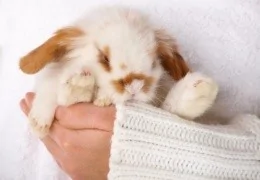The Tornjak originated from genetically homogeneous, almost extinct, indigenous shepherd dogs. These dogs have...
SMALL BREED DOGS
SMALL DOG BREEDS
INTRODUCTION
The big dog clubs worldwide recognize hundreds of breeds of all sizes, coats and physical characteristics. The FCI -Federation Cynologique Internationale- recognizes more than 300 different breeds and, within the national clubs that conform it, we can find as many native breeds of those same countries that are not recognized by that federation or are in the process of being recognized; the AKC -American Kennel Club- of the United States, on the contrary, recognizes only 193 canine breeds, having a different operation from the first one. Within all these canine breeds that have emerged and accompanied the human being throughout the centuries, many of them have a small size by nature or, because over time, smaller specimens have been selected in order to fulfill their functions more effectively. We are going to focus on the small breed dogs recognized by the FCI or by clubs that conform them -Spanish or foreign-.
*
WHAT IS A PUREBRED DOG?
What is a purebred dog?The term "breed" will be focused in this article on dogs, but it is extrapolated to all domestic animals with the exception of some types of rodents - for example, chinchillas, hamsters or rats.

A purebred animal is one that maintains, within the same species, specific characteristics that are maintained throughout the various generations: size, type of coat, colors, natural aptitudes, behavior... But, there is a small detail that many people overlook when acquiring -through adoption or purchase-, and that is that for an animal to be purebred it must have a pedigree recognized by a national or international club. The pedigree -and the individual identification of origin that accompanies it, either tattoo, microchip or ring, depending on the animal- is the only thing that can demonstrate that a small breed dog is truly of that breed, if it does not have it, our dog will be considered a "mongrel" or "similar to" because even though it may look like it, there is nothing to prove it. The genealogical tree is not only interesting for the owner regarding breeding -a very serious subject that should not be put into practice by anyone without the appropriate knowledge-, but it will also give us a lot of information regarding the health tests carried out on that genetic line and, above all, on our pet.
*
TYPES OF SMALL DOG BREEDS
The term "small" varies according to the perception of each person, but in general terms it would refer to any dog of less than 12 kg in its adult age; in the case of the breeds, the ideal weight is marked by its standard (regulations) and we will be guided by them.
According to their functionality, dog breeds are divided into different groups, and below we will see the small breeds that make up each of them:
*
GROUP 1: Shepherd dogs and Cattle Dogs (except Swiss Cattle Dogs).
Shetland Shepherd Dog
Schipperke
*
GROUP 2: Pinscher and Schnauzer type dogs - Molossoids - Mountain dogs and Swiss Cattle Dogs
Affenpinscher
Miniature Schnauzer
Miniature Pincher
Danish and Swedish Farm Dogs
Dutch Smous Dog
*
GROUP 3: Terriers
Australian Terrier
Kishu (Japanese Terrier)
Cairn Terrier
Dandie Dinmont Terrier
Norfolk Terrier
Norwich Terrier
Scottish Terrier
Sealyham Terrier
Jack Russell Terrier
Parson Russell Terrier
West Highland White Terrier
Czech Terrier
Bedlington Terrier
Australian Silky Terrier
Yorkshire Terrier
English Toy Terrier
*
GROUP 4: Teckels
Standard Dachshunds
Miniature Dachshund
Kaninchen Dachshund
*
GROUP 5: Spitz and primitive type dogs
Norwegian Lundehund
Mittlespitz (Medium German Spitz)
Kleinspitz (Small German Spitz)
Pomeranian (Dwarf German Spitz)
Italian Volpino
Shiba Inu
Japanese Spitz
Italian Volpino
Basenji
Miniature Xoloitzcuintle
Peruvian Hairless Medium
Peruvian Hairless Small
Small Portuguese Warren Hound
Etna Cirneco
*
GROUP 9: Companion Dogs
Havanese
Coton de Tulear
Bichon Frisé
Bichon Bolognese
Small Lion Dog
Medium Poodle
Dwarf Poodle
Toy Poodle
Brussels Griffon
Petit Brabançon
Chinese Crested
Shih Tzu
Lhasa Apso
Tibetan Spaniel
Chihuahua
Cavalier King Charles Spaniel
King Charles Spaniel
Chin (Japanese Spaniel)
Pekingese
Continental Dwarf Spaniel (Papillon and Phalene)
Russian Toy
Pug
Boston Terrier
French Bulldog
*
GROUP 10: Sighthounds
Small Italian Greyhound
*
BREEDS PROVISIONALLY RECOGNIZED
Valencian Mouser
Biewer Terrier
Prague Mouser
Andalusian Bodeguero
*
FOOD FOR SMALL BREED DOGS

Looking for a quality feed for your small breed dog is very important, and here we will recommend Reis d'Aranda's Scottish Salmon Puppy Food -which will help to a good maintenance of joints and skin- and Reis d'Aranda's adult dog feeds, which have a great composition. As far as treats are concerned, we will look for those that help reduce tartar and have beneficial properties for health, as well as being as natural as possible, such as Reis d'Aranda's handmade cookies.













Leave a comment
Log in to post comments
Comments
Bonitos perros
By: Narcisa On 06/05/2024Yevo toda mi vida con perritos pekeños, mis nietos me regalaron un chiguagua pero no creo que sea puro, se llama Curro y es muy bueno.
Pinscher y Yorksair
By: Josué On 05/11/2024Mis favoritos son el pinscher y el yorksair, llevo pidiendo uno a mis padres muxos años.
Interesante
By: Elijah On 05/11/2024Los perros que más me gustan son los pequeños, aunque el de mi madre es un poco hijo del diablo XDD Tengo ganas de poder saber más.
Un artículo muy bueno y curioso
By: Sara On 05/11/2024Hay muchas razas que no conocía y que me han parecido super curiosas
Me ha gustado
By: María S. On 05/05/2024Buen artículo, me hubiera gustado más información sobre las razas pequeñas pero veo que van poniendo artículos individuales.